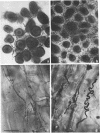Abstract
Many cool-season grasses (subfamily Pooideae) possess maternally transmitted fungal symbionts which cause no known pathology and often enhance the ecological fitness and biochemical capabilities of the grass hosts. The most commonly described endophytes are the Acremonium section Albo-lanosa spp. (Acremonium endophytes), which are conidial anamorphs (strictly asexual forms) of Epichloë typhina. Other endophytes which have been noted are a Gliocladium-like fungus in perennial ryegrass (Lolium perenne L.) and a Phialophora-like fungus in tall fescue (Festuca arundinacea Schreb.). Here, we report the identification of additional non-Acremonium sp. endophytes (herein designated p-endophytes) in three more grass species: Festuca gigantea, Festuca arizonica, and Festuca pratensis. In each grass species, the p-endophyte was cosymbiotic with an Acremonium endophyte. Serological analysis and sequence determinations of variable portions of their rRNA genes indicated that the two previously identified non-Acremonium endophytes are closely related to each other and to the newly identified p-endophytes. Therefore, the p-endophytes represent a second group of widely distributed grass symbionts.
Full text
PDF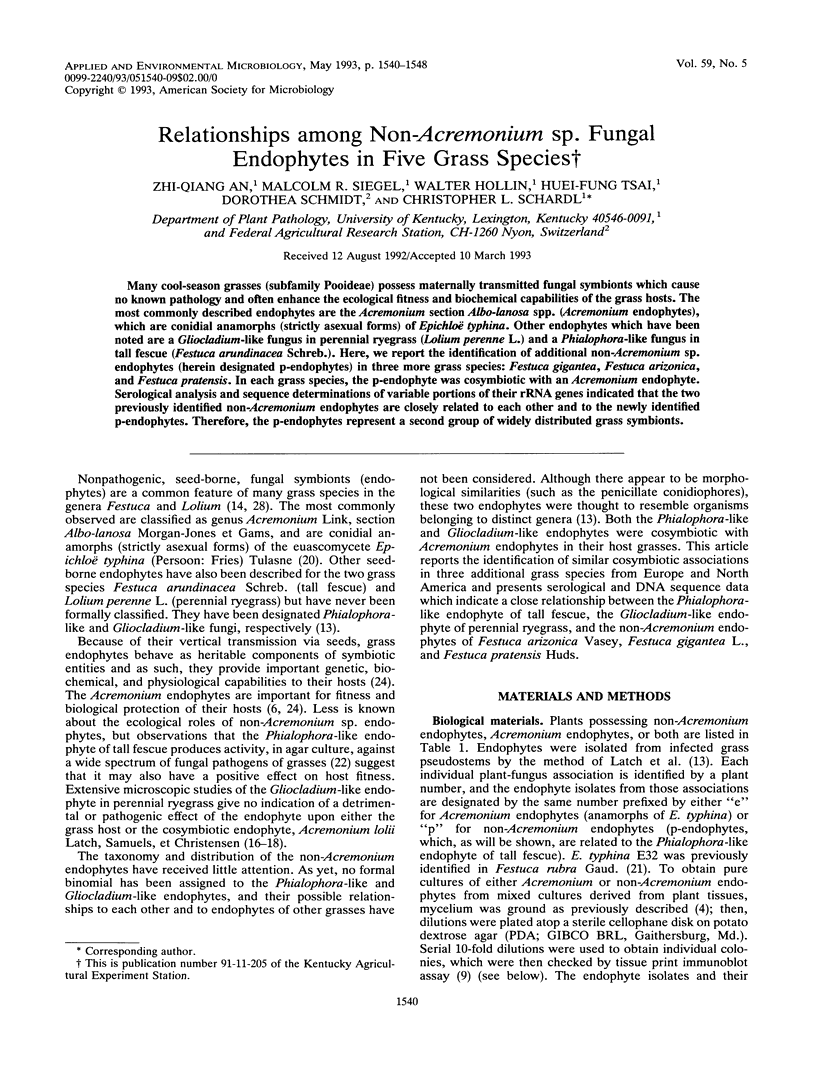
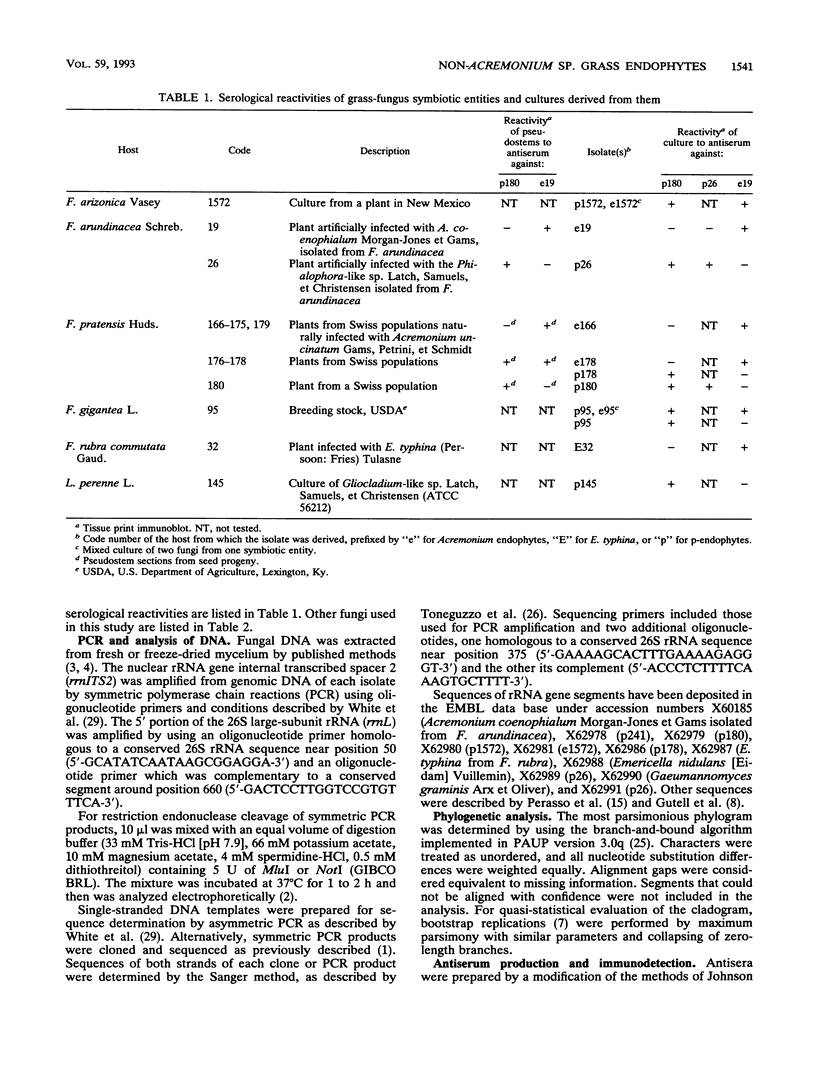
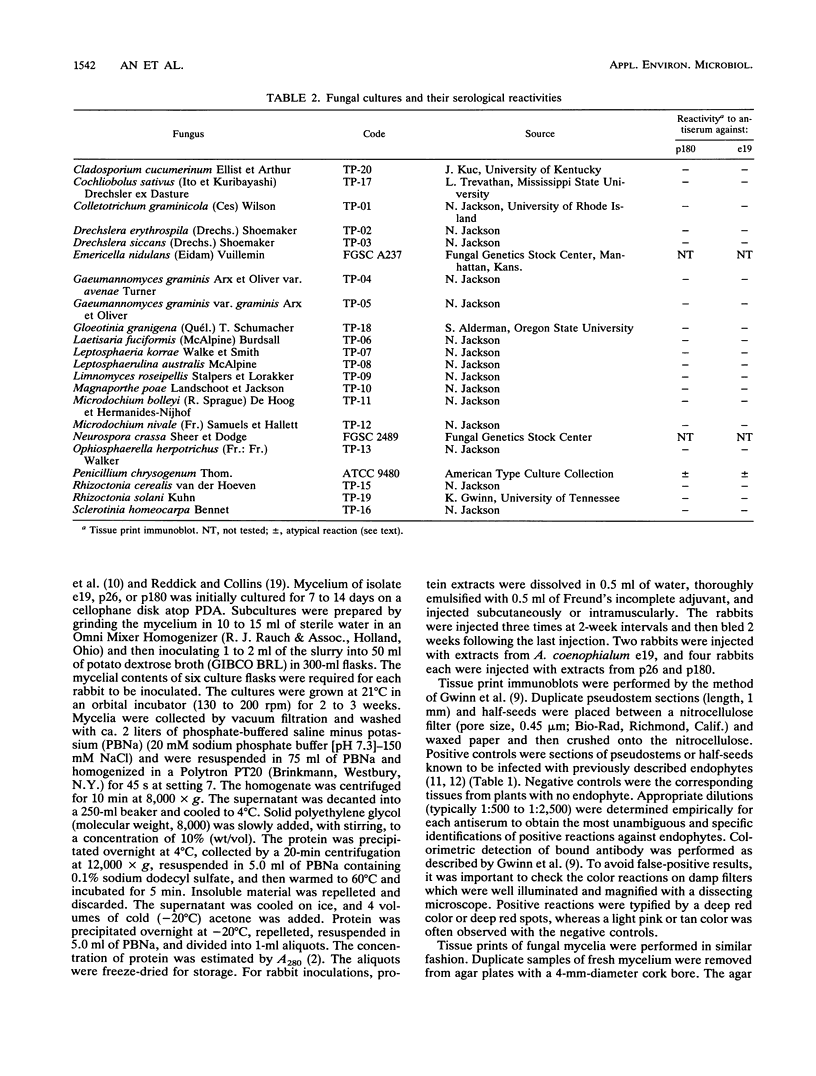
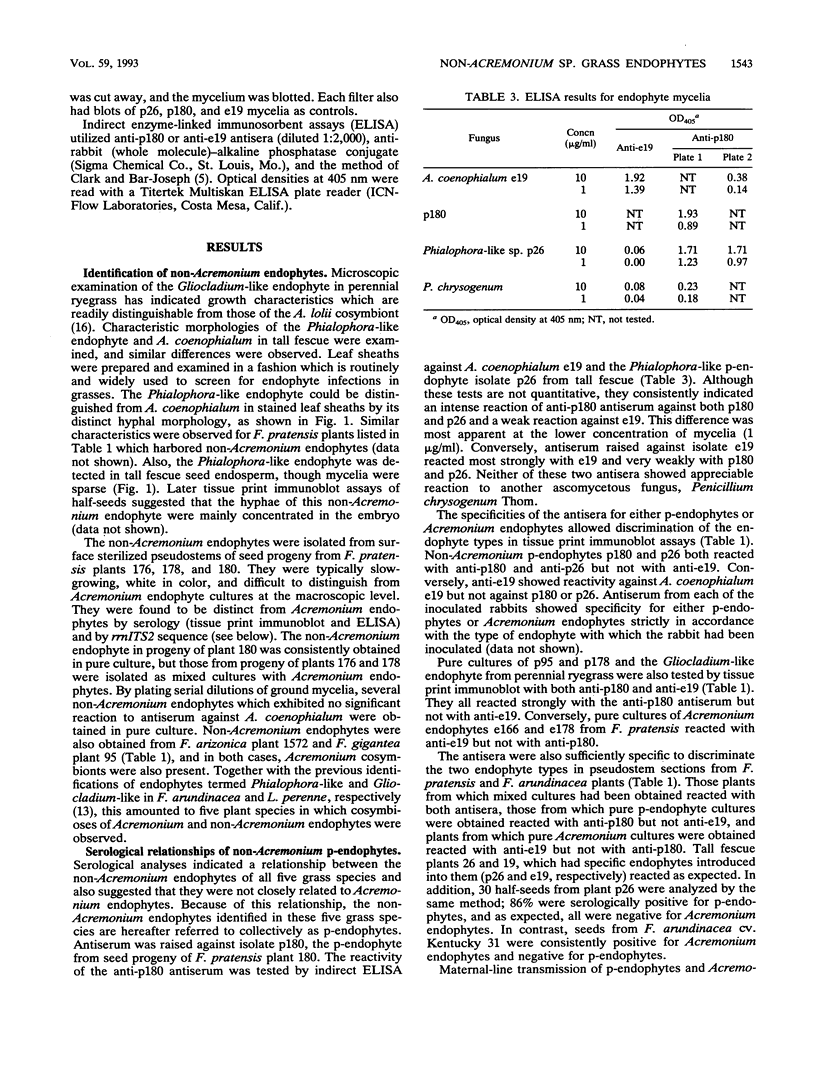
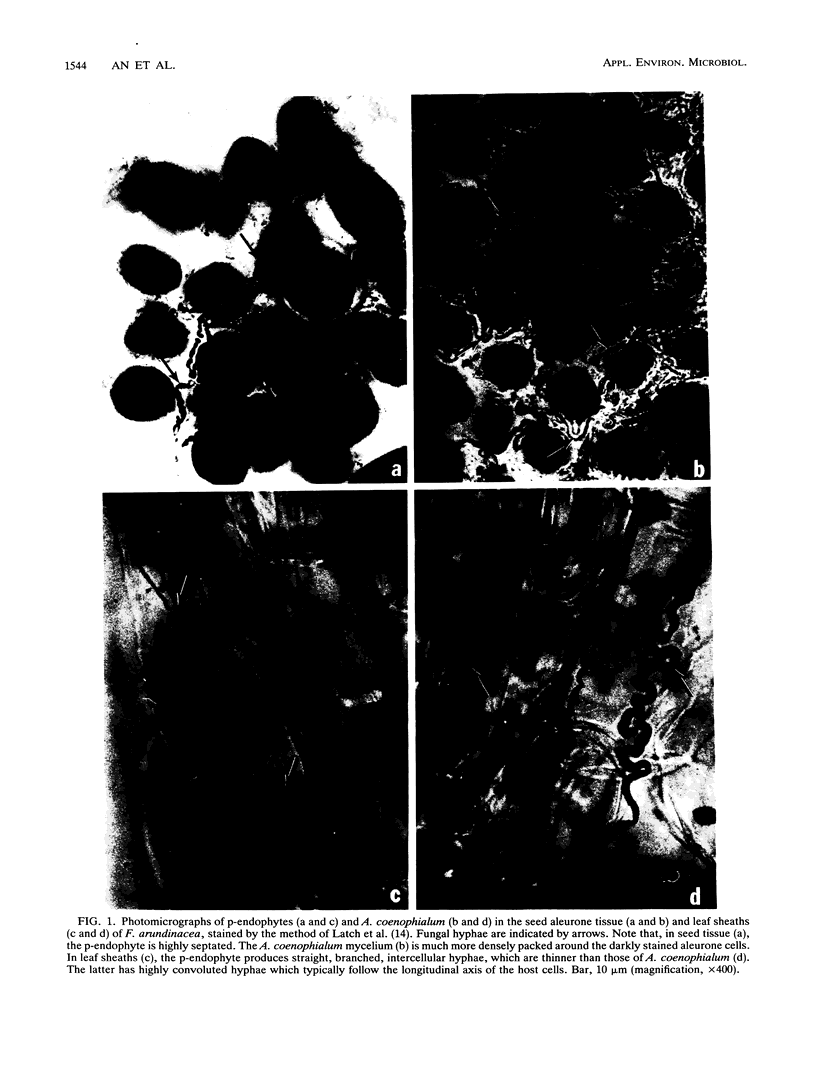
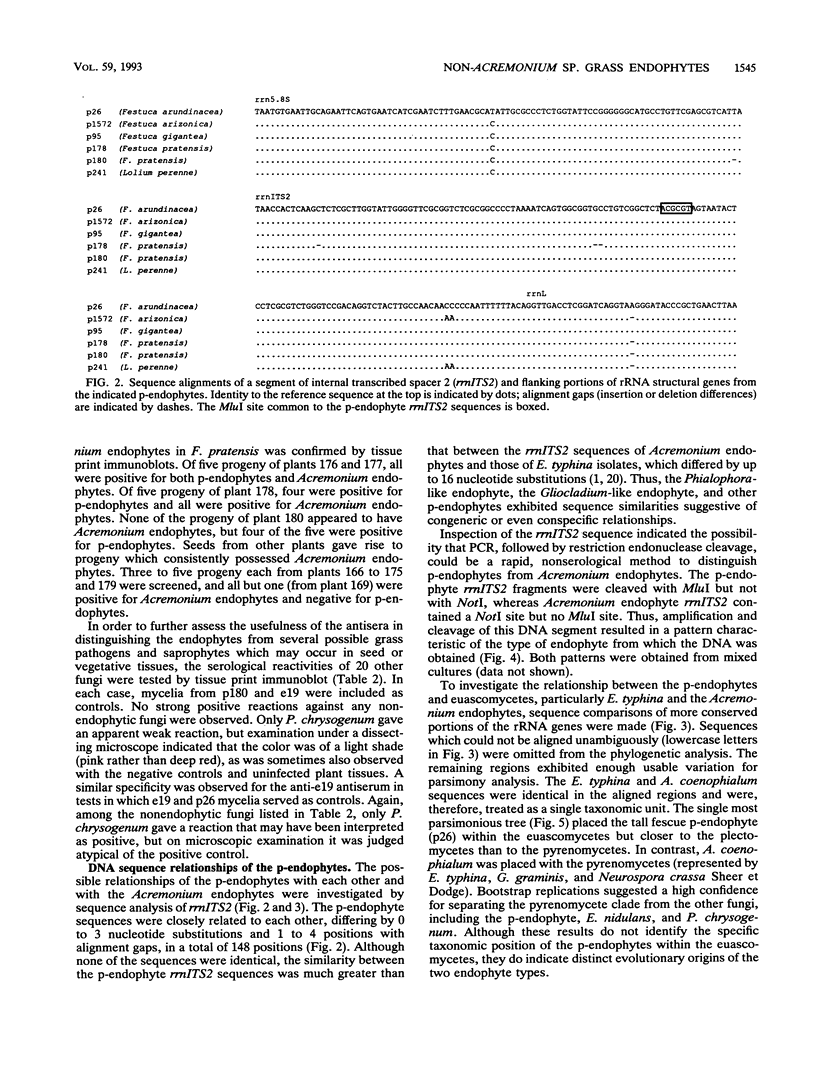
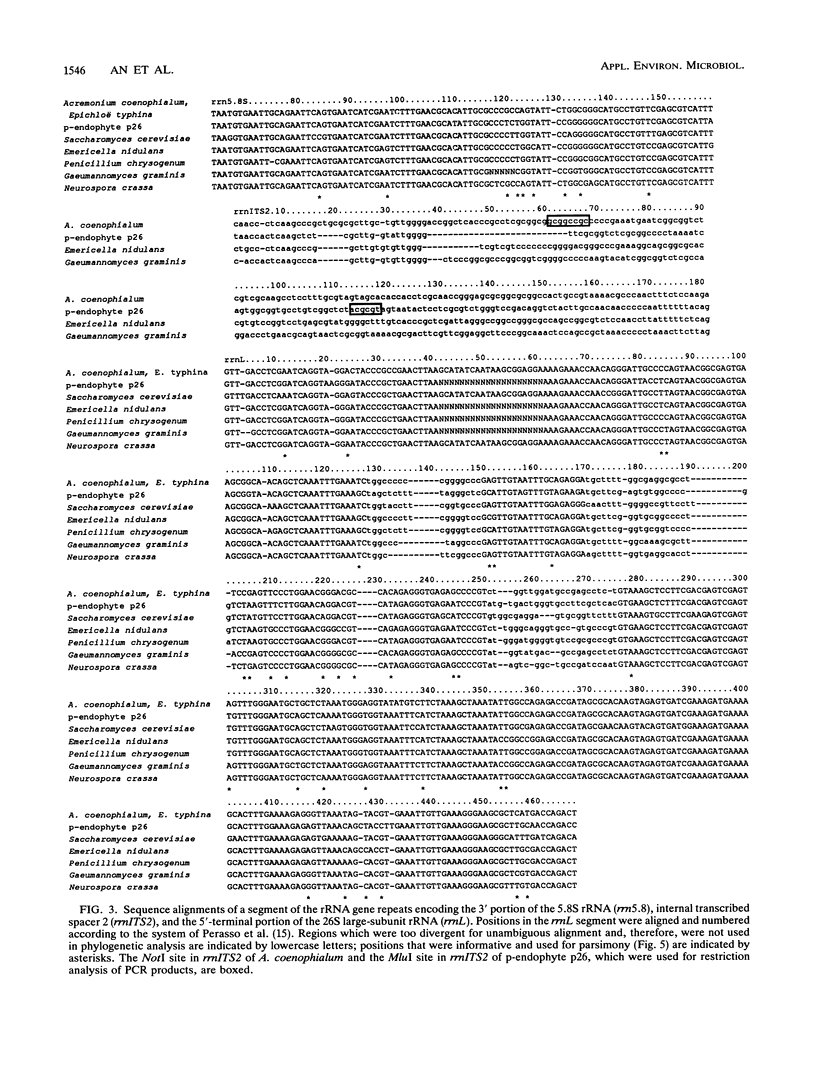
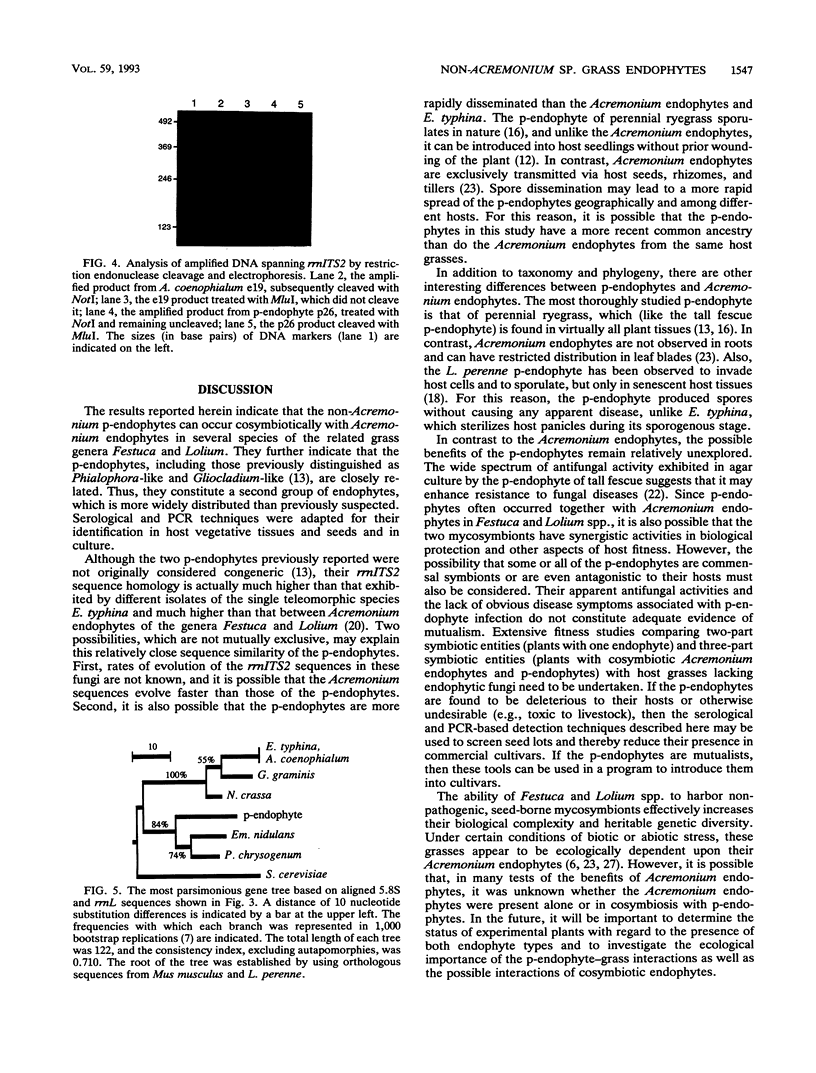
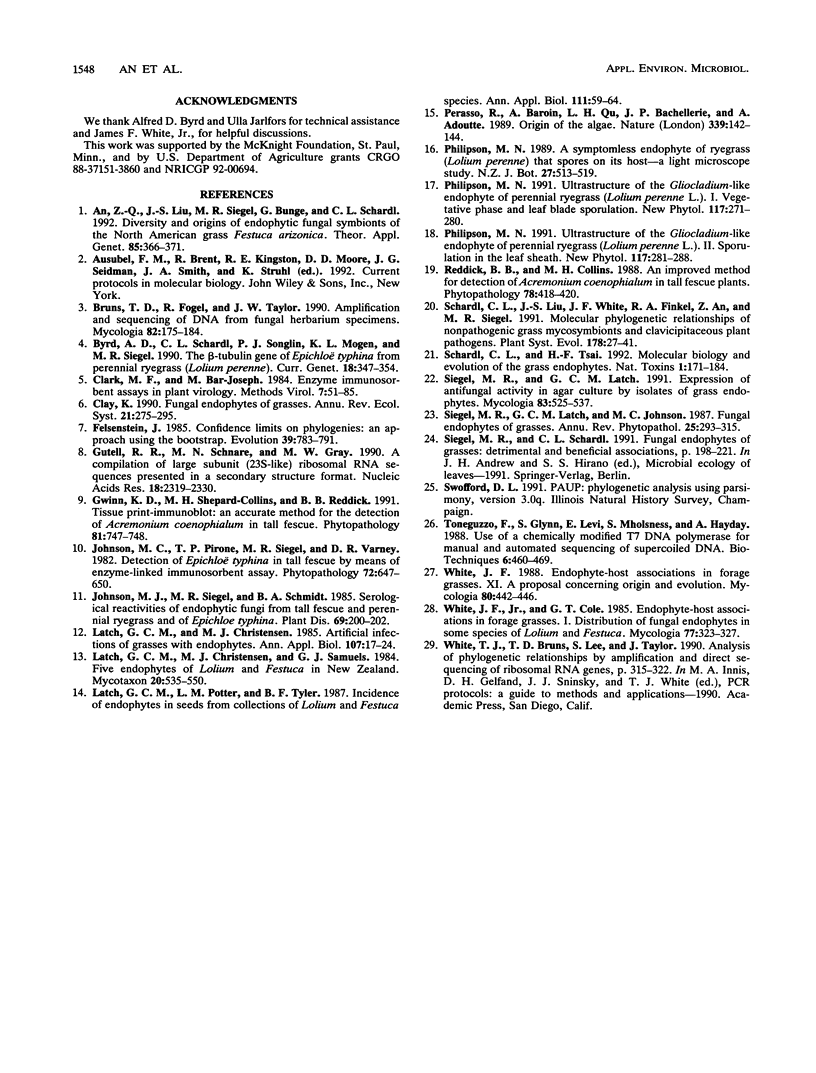
Images in this article
Selected References
These references are in PubMed. This may not be the complete list of references from this article.
- Byrd A. D., Schardl C. L., Songlin P. J., Mogen K. L., Siegel M. R. The beta-tubulin gene of Epichloë typhina from perennial ryegrass (Lolium perenne). Curr Genet. 1990 Nov;18(4):347–354. doi: 10.1007/BF00318216. [DOI] [PubMed] [Google Scholar]
- Gutell R. R., Schnare M. N., Gray M. W. A compilation of large subunit (23S-like) ribosomal RNA sequences presented in a secondary structure format. Nucleic Acids Res. 1990 Apr 25;18 (Suppl):2319–2330. doi: 10.1093/nar/18.suppl.2319. [DOI] [PMC free article] [PubMed] [Google Scholar]
- Perasso R., Baroin A., Qu L. H., Bachellerie J. P., Adoutte A. Origin of the algae. Nature. 1989 May 11;339(6220):142–144. doi: 10.1038/339142a0. [DOI] [PubMed] [Google Scholar]
- Schardl C. L., Tsai H. F. Molecular biology and evolution of the grass endophytes. Nat Toxins. 1992;1(3):171–184. doi: 10.1002/nt.2620010305. [DOI] [PubMed] [Google Scholar]



